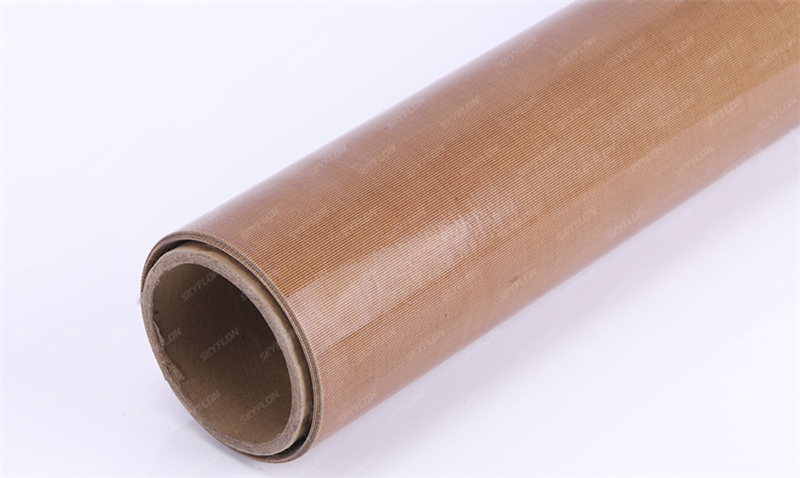

In modern industrial production, the application of high-temperature resistant Teflon high-temperature cloth is becoming more and more extensive. Its excellent high-temperature resistance and chemical stability enable it to maintain stable performance in various extreme environments. How to effectively bond Teflon high-temperature cloth to ensure that it is not easy to fall off or break during use has become an urgent problem to be solved. This article will summarize the common bonding methods of high-temperature resistant Teflon high-temperature cloth so that readers can better understand and choose the bonding method that suits them.

Hot pressing method is a common bonding method for Teflon high-temperature cloth. It uses the effects of high temperature and high pressure to form a strong bond between Teflon high-temperature cloth and the substrate to be bonded. This method usually requires the use of a special hot press machine for operation. First, place the Teflon high-temperature cloth between two metal plates, and then adjust the temperature and pressure parameters of the hot press to achieve the required bonding conditions. During the hot pressing process, a certain molten layer will be formed between the Teflon high-temperature cloth and the metal plate, thereby achieving a strong bond.
The advantage of the hot pressing method is that it has high bonding strength, which can ensure that the Teflon high-temperature cloth is not easy to fall off in a high temperature environment. However, this method requires special equipment to operate, is costly, and may not be suitable for small and thin applications.
Glue bonding method is another commonly used Teflon high temperature cloth bonding method. It uses special high temperature glue to connect Teflon high temperature cloth to the substrate to be bonded. The operation of this method is relatively simple and does not require complex equipment. First, the glue is evenly applied to the contact surface of the Teflon high temperature cloth and the substrate, and then the two are tightly fitted together. Next, the bonding part is pressurized under high temperature conditions to cure the glue and achieve a strong bonding effect.
The advantage of the glue bonding method is that it is simple to operate, low cost, and suitable for bonding Teflon high temperature cloth of various shapes and sizes. However, it should be noted that the quality and performance of the glue have an important influence on the bonding effect. Therefore, when choosing glue, it is necessary to ensure that it has good high temperature resistance and chemical stability to ensure the firmness and durability of the bonding.
Ironing method is a simple method suitable for bonding small and thin Teflon high-temperature cloth. This method mainly uses the high temperature of the iron to form a molten layer between the Teflon high-temperature cloth and the substrate, thereby achieving bonding. First, align the Teflon high-temperature cloth and the substrate according to the required position, and then place a flat, heat-resistant and non-heat-conductive pad under the joint part. Next, use an iron that has been heated to an appropriate temperature to iron the joint part back and forth to form a molten layer between the Teflon high-temperature cloth and the substrate. Finally, pressurize the ironed joint to ensure its firmness.
The advantages of the ironing method are that it is simple to operate, low cost, and suitable for various small and thin applications. However, it should be noted that the temperature and pressure of the iron need to be properly controlled to avoid damage to the Teflon high-temperature cloth or affect its performance.
In addition to the above common bonding methods, there are some other methods that can be used for bonding Teflon high-temperature cloth. For example, the local rubber vulcanization method can be used to repair local damage to Teflon high-temperature cloth; the rubber repair glue covering repair method can be used to repair large-area damage. Although these methods are not commonly used, they may have certain application value in some special cases.
In short, there are many bonding methods for high-temperature resistant Teflon high-temperature cloth, and each method has its own characteristics and scope of application. When choosing a bonding method, it is necessary to comprehensively consider factors such as the actual application scenario, cost budget, and performance requirements. At the same time, no matter what method is used, it is necessary to ensure that the operation is standardized and the material quality is reliable to ensure the firmness and durability of the bonding.